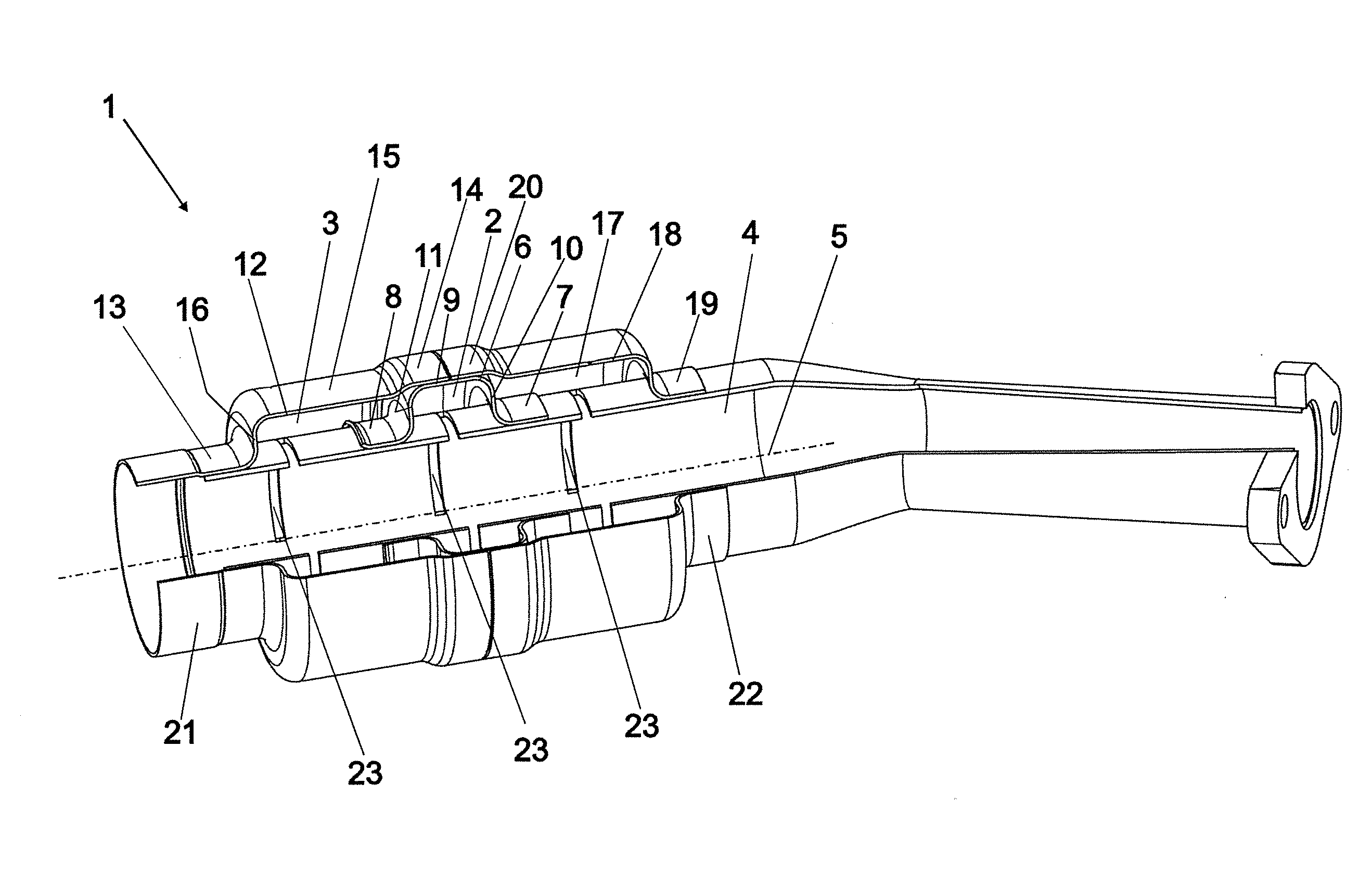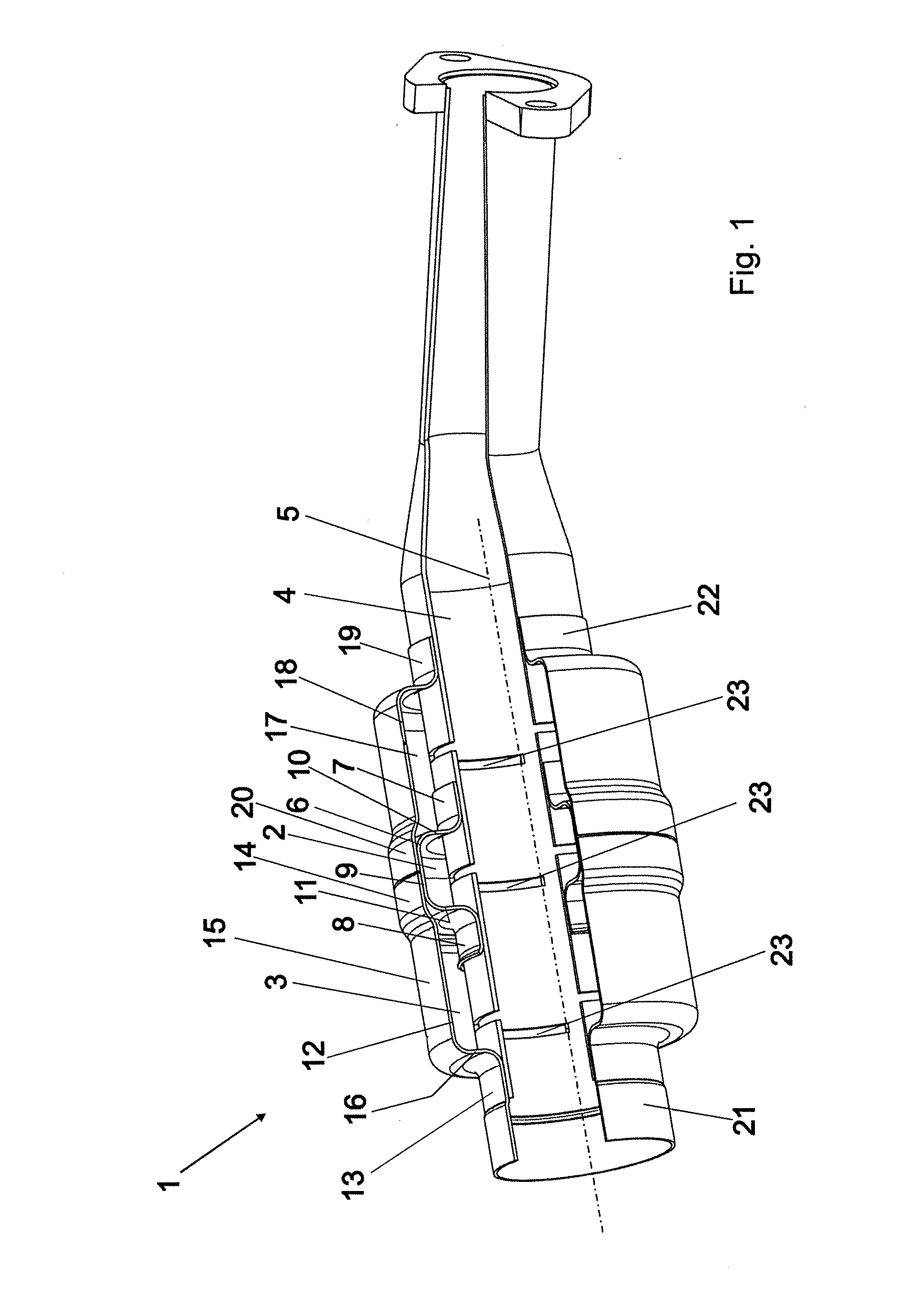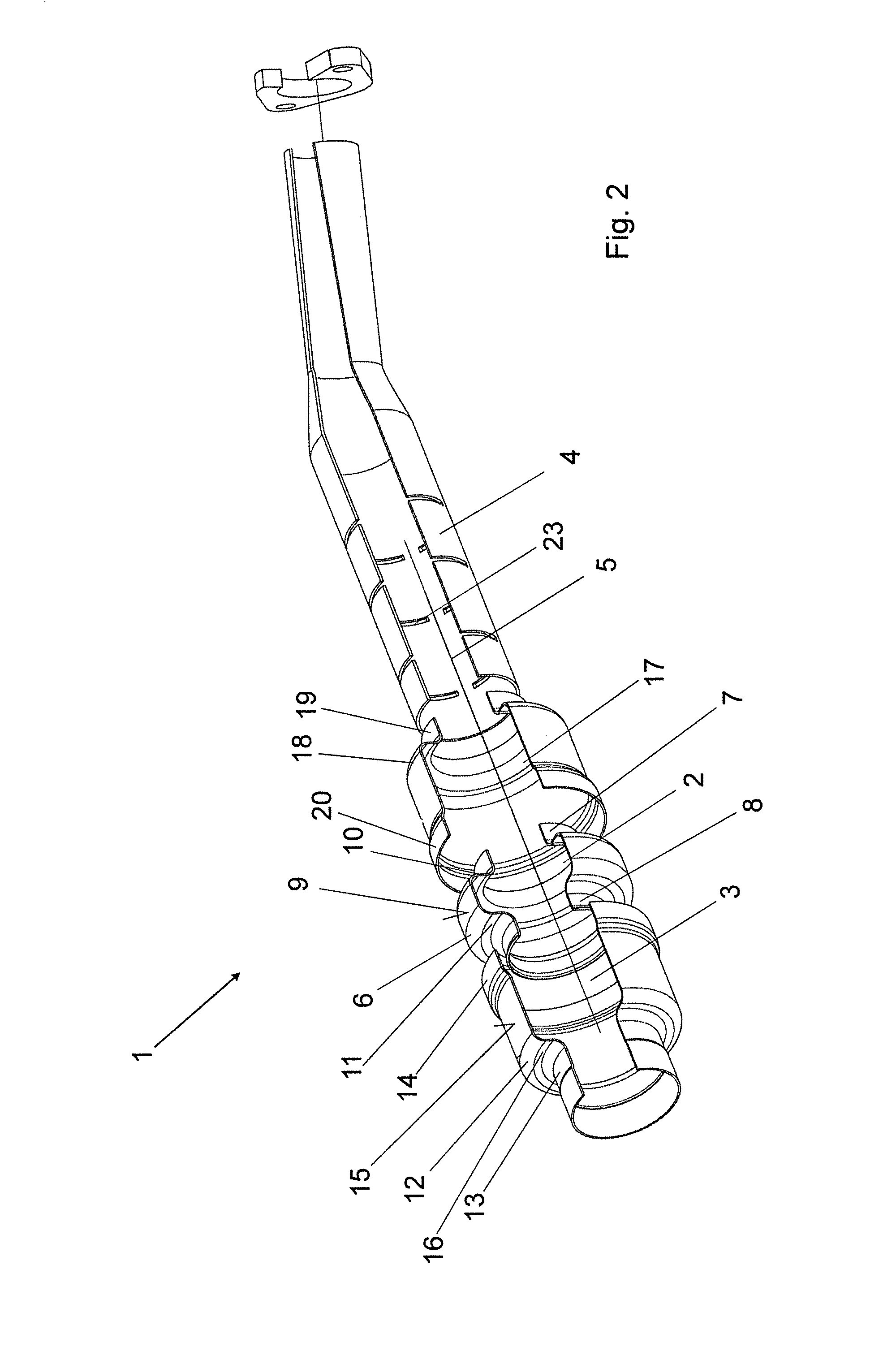Resonater
a technology of resonators and resonators, applied in the field of resonators, can solve the problems of relative high tool cost, and achieve the effects of reducing tool cost, easy and cost-effective production, and reducing tool cos
- Summary
- Abstract
- Description
- Claims
- Application Information
AI Technical Summary
Benefits of technology
Problems solved by technology
Method used
Image
Examples
Embodiment Construction
[0025]A resonator 1 for lowering airborne and solid-borne sound essentially comprises a first annular chamber 2, a second annular chamber 3 and an inner pipe 4.
[0026]The first annular chamber 2 is arranged coaxial to a resonator longitudinal axis 5 and has an essentially U-shaped circumferential wall 6 which at both ends transitions into cylindrical end pieces 7, 8. The U-shaped wall 6 has an outer wall 9 running parallel to the resonator longitudinal axis 5, said outer wall being limited by two ring-shaped side walls 10, 11 arranged perpendicular to the resonator longitudinal axis 5. The outer wall 9 transitions into the end pieces 7, 8 by way of the side walls 10, 11.
[0027]The second annular chamber 3 has an L-shaped circumferential wall 12 coaxial to the resonator longitudinal axis 5, which L-shaped circumferential wall, at its end facing away from the first annular chamber 2, transitions into a cylindrical end piece 13. At its end 14 facing the first annular chamber 2, the L-sha...
PUM
 Login to View More
Login to View More Abstract
Description
Claims
Application Information
 Login to View More
Login to View More - R&D
- Intellectual Property
- Life Sciences
- Materials
- Tech Scout
- Unparalleled Data Quality
- Higher Quality Content
- 60% Fewer Hallucinations
Browse by: Latest US Patents, China's latest patents, Technical Efficacy Thesaurus, Application Domain, Technology Topic, Popular Technical Reports.
© 2025 PatSnap. All rights reserved.Legal|Privacy policy|Modern Slavery Act Transparency Statement|Sitemap|About US| Contact US: help@patsnap.com



